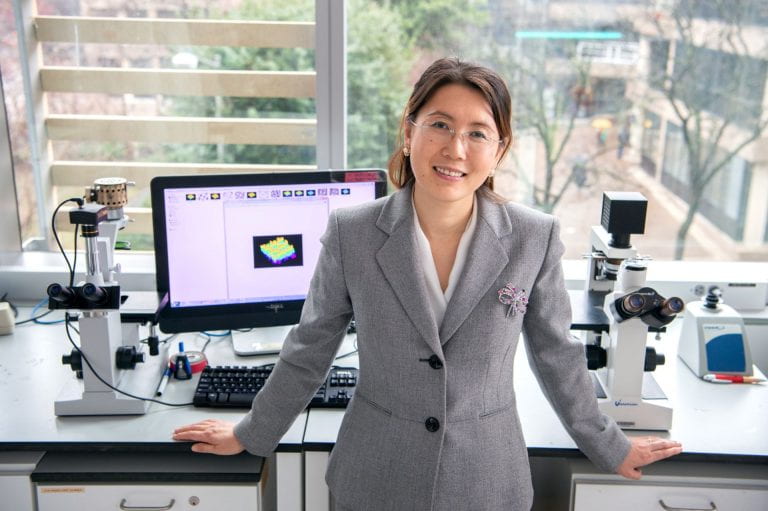Dr. Grace Zhang: At the Leading Edge

Dr. Lijie Grace Zhang is used to being at the leading edge of research. She recalls, for example, presenting a paper on 3D printing of blood vessels to her peers at an academic conference in 2015. No one in the audience asked a question about her research, because they had never heard of it. Now, five years later, many researchers in the biomedical engineering field are working on this issue.
Dr. Zhang’s primary research focus is 3D and 4D bio-printing and nano-technologies to aid tissue and organ regeneration. “Our long term goal is to repair damaged tissue or even organs,” she says.
Specifically, her team uses bio-printing and nano-materials to fabricate vascularized cardiac tissue for heart regeneration and neuro-guidance conduits to repair the spinal cord after injury. She hopes her methods and ideas will help overcome some of the limitations that current approaches to complex tissue and organ regeneration have. For example, transplants are widely used to replace damaged tissues and organs, but there simply are not enough tissue and organ donors, and donor transplants often have attendant complications.
Bio-printing artificial tissues and organs would help eliminate this shortage and the complications of transplants, but traditional bio-printing techniques also have their own challenges. Dr. Zhang’s team, however, improves on these traditional bio-printing techniques by using nano-materials and advanced 3D and 4D printing techniques to create complex tissues. With these materials and techniques, her team attempts to mimic the nano-features of native tissue in the human body, thereby improving the tissue’s performance of its functions.
“We want to see how to create a really functional tissue or organ. For example, we can create the shape of the heart but how do we make it functional?” states Dr. Zhang.
To try to answer that question, her lab is pioneering 4D bio-printing by trying to create a novel smart biomaterial suitable for printing and biocompatible with cells. 4D printing creates a three-dimensional object but adds the dimension of transformation over time, which allows researchers to create a type of programmable matter that can grow and change over time, as tissue and organs need to do to function properly in the human body.
Her team is still gathering data for heart tissue and neuro-guidance conduits, but they have multiple patent applications so far and many possibilities for future commercialization. Dr. Zhang attributes their success to their innovative thinking and to collaborative colleagues and university support. “Our support at the department and school level is excellent,” she remarks. “And our research staff is excellent and efficient. This is critical, because they don’t slow down the speed of our research.”

